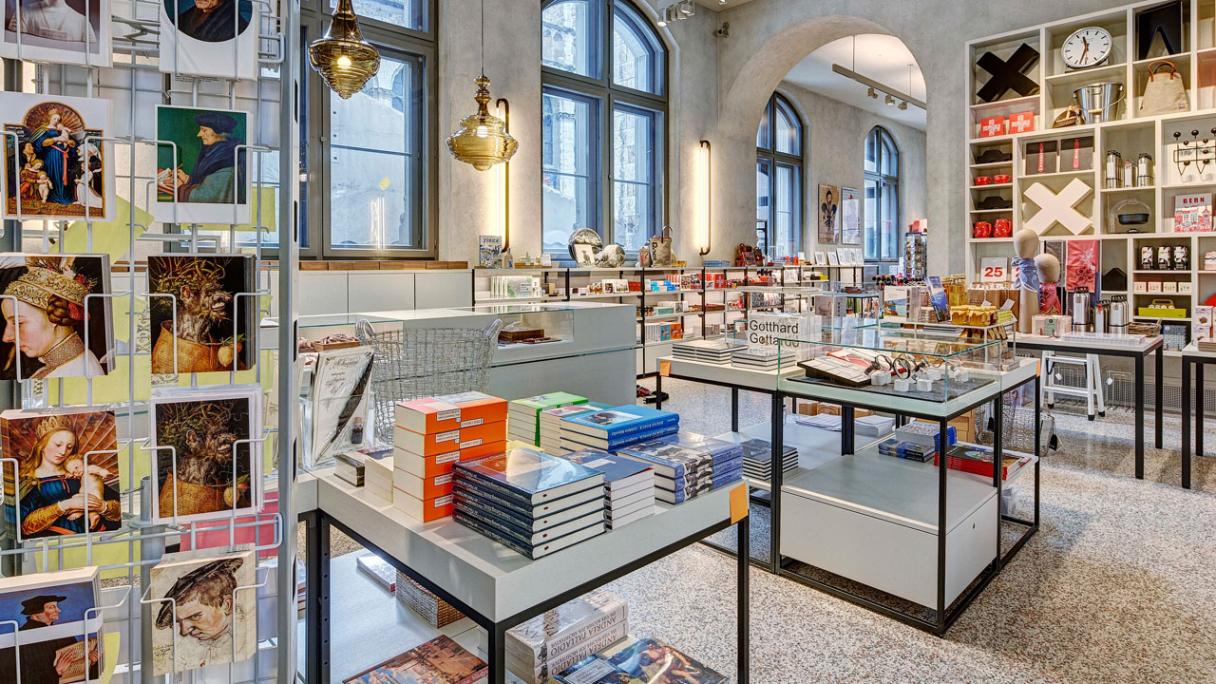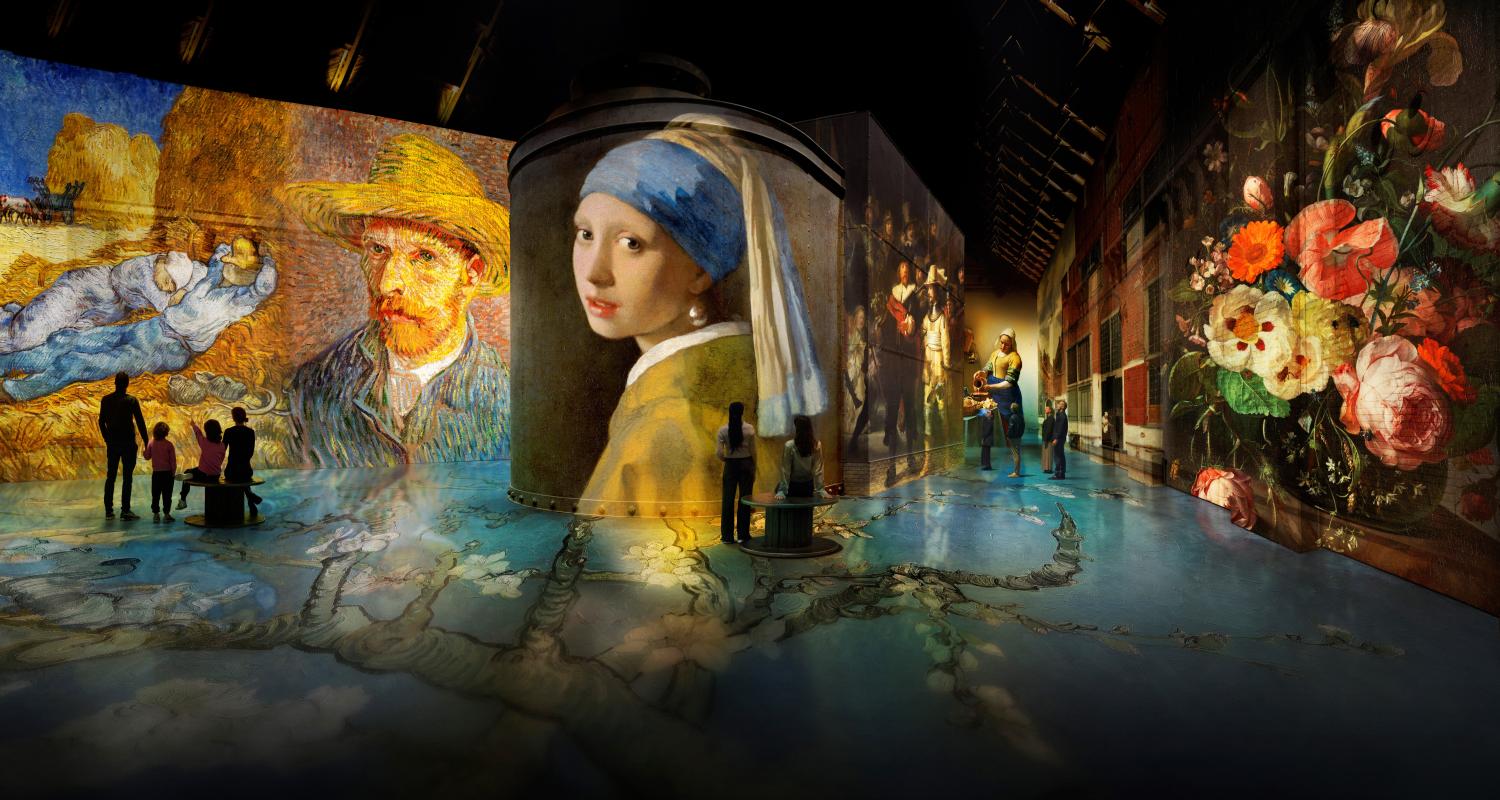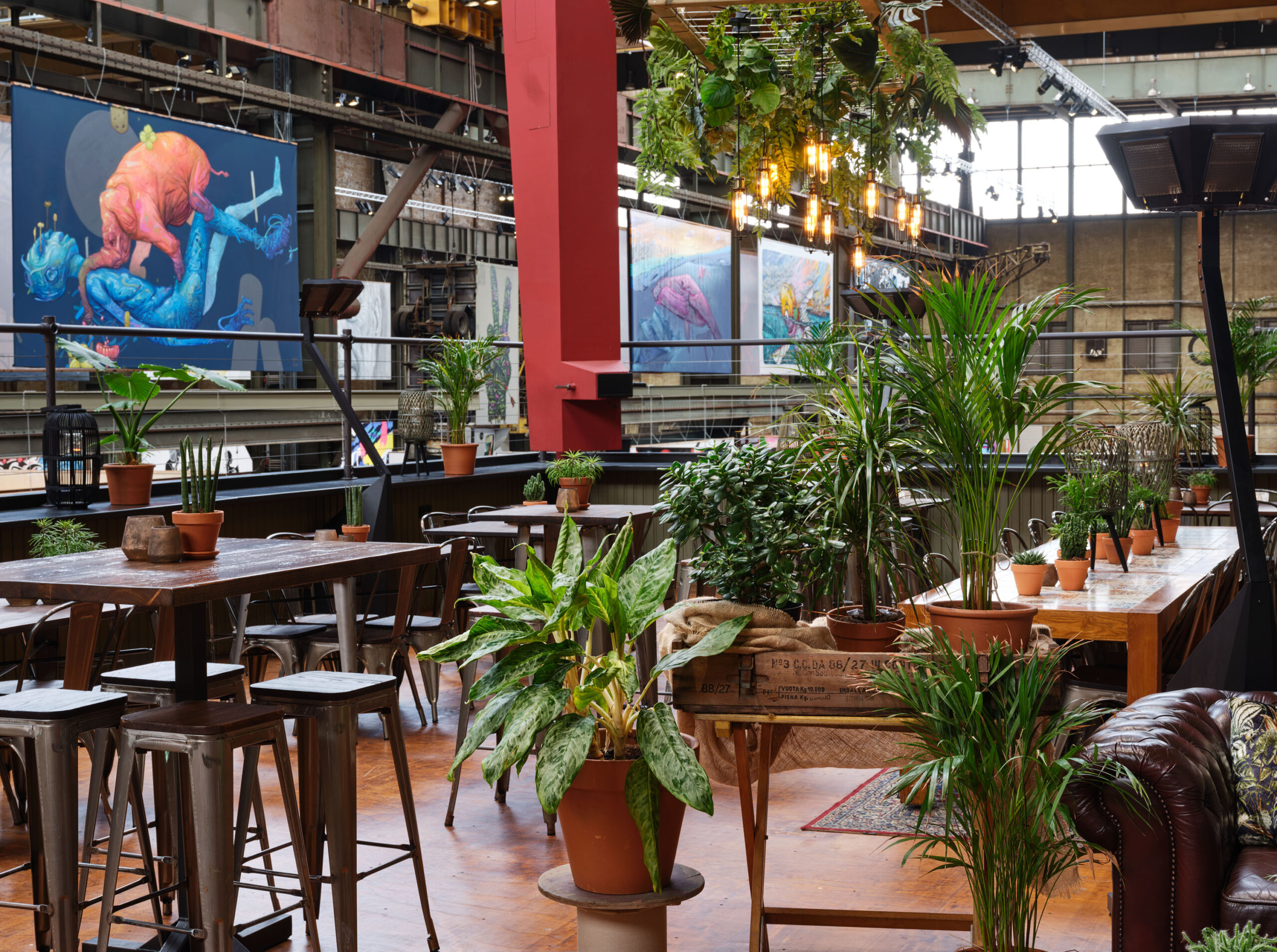13th century
Amsterdam has a long and eventful history. The origins of the city lie in the 13th century, when fishermen living along the banks of the Amstel River built a bridge across the waterway near ‘t IJ, then a large saltwater inlet. Wooden doors on the bridge served as a dam and protected the town from the IJ, which often flooded the early settlement.
People first settled where the river Amstel meets the sea around the year 1000. It is an ideal location for shipping. The mouth of the river Amstel, where the Damrak is now, formed a natural harbor, which became important for trade as the city kept growing and growing to what it is today.
The oldest document that refers to the settlement of Aemstelledamme (‘dam on the Amstel’), as it was then known, is dated 1204 AD. Around 1306, Gwijde van Henegouwen, bishop of Utrecht, gave Amsterdam city-rights. Only about a 1000 people lived here at the time. Over two centuries, Amsterdam developed into a busy port.
14th century
In the 14th century the community flourished as a center of trade and the first canals were dug. Catastrophic fires destroyed a large part of the city in 1421 and again in 1452.
Following the second fire, legislation made it illegal to build with wood, and thus brick became the material of choice. Only a few wooden buildings remain from before the 15th-century fires. ‘Het Houten Huys’ (The Wooden House) in the Begijnhof is considered to be the oldest.

Royal Streets (Prinsen & Herenstraat)
16th-17th century (Amsterdam’s ‘Golden Age’)
In the 17th century Holland and Amsterdam rose to considerable importance. A number of immigrants from Antwerp and Flanders had been cordially received by the inhabitants who made good use of their energy and business knowledge.
They soon become useful and prominent members of the community. Amsterdam grew explosively at that time, which is also called “The Golden Age”. Due to the increase in trade it was an era of wealth and prosperity. Important merchants founded the VOC – the Dutch East India Company (Dutch: Vereenigde Oost-Indische Compagnie, VOC).
This company was established in 1602 – when the States-General of the Netherlands gave it a 21-year monopoly to carry out colonial activities in Asia. It is considered to be the first multinational corporation in the world and it was the first company to issue stock.
It was also arguably the first mega-corporation, possessing quasi-governmental powers, including the ability to wage war, imprison and execute convicts, negotiate treaties, coin money and establish colonies. Statistically, the VOC eclipsed all of its rivals in the Asian trade industry and enjoyed huge profits from its spice, sugar, tea, opium, tobacco and slave-trade monopoly through most of the 17th century.
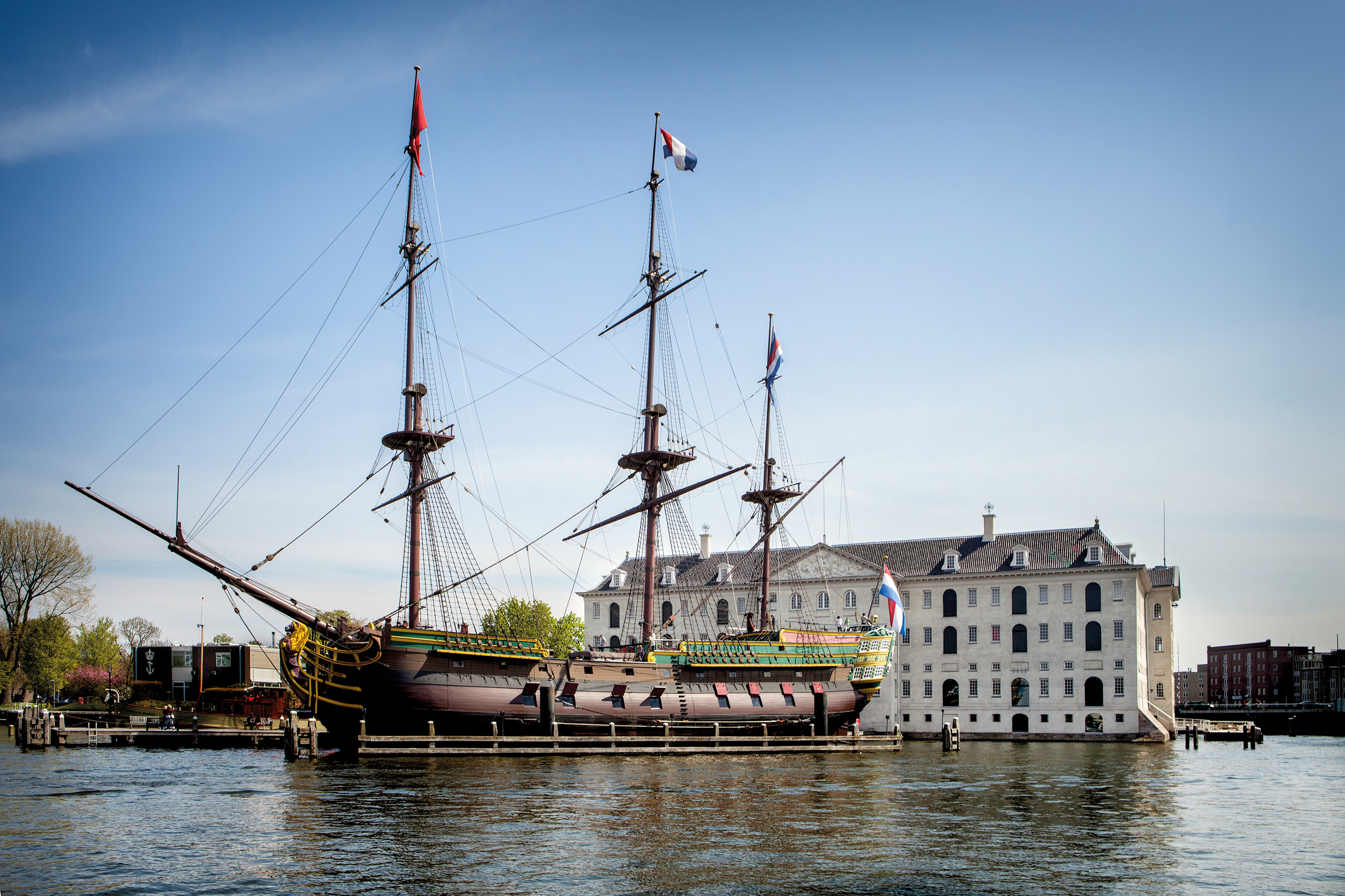
VOC ship ‘Amsterdam’ – Scheepvaartmuseum
Amsterdam co-owned Suriname, where slaves worked on plantations. The expansion of the city between 1613 and 1663 can still be seen as the most important monuments were built during this time, including city hall, the Westerkerk, the Zuiderkerk (both beautiful churches) and many breathtaking buildings on the canals. It is during this period that Amsterdam became one of the most important trading cities in the world, as well as the financial center of Europe.
With the money the merchants made, they not only built beautiful houses on the canals, but they also invested in art, which drew many architects and artists to the city. Rembrandt van Rijn is definitely one of the most famous of the many well-known painters that came to Amsterdam. Amsterdam was the heart of such energy and development. The city’s bustling activity deeply impressed foreign visitors, including Descartes, whose position gave him every opportunity to make observations, which he duly recorded. The philosopher visited Holland for the first time in 1617 and afterwards lived there for ten years.
Delighted with the facilities afforded to him for his studies, he lived in absolute retirement, giving himself up to abstruse speculation and scientific research. Anatomy occupied him for a whole winter and his butcher furnished him with portions of animals “to dissect at leisure.” As its wealth increased, Amsterdam was gradually transformed.
Like most medieval cities, it had found it necessary to prepare for attack. But new demands arose with the development of commerce. Amsterdam is a magnet for migrants, including political and religious refugees. Jews were allowed to build synagogues and in Amsterdam’s liberal atmosphere the economy flourished. Under these conditions, the need for accurate information regarding politics, markets and other matters of public interest became evident. Journalism sprang into existence and the Gazette of Holland, which circulated throughout Europe, introduced the power of the periodical press.

Rijksmuseum
The same practical sentiment governed the transformation of disused Catholic churches and cloisters into temples of the reformed faith. Buildings specially designed for the new worship also arose in various quarters. They were generally plain rectangular halls of uniform construction, crowned by a belfry.
Examples include the Zuyderkerk, built between 1607 and 1614; the Noorderkerk, its interior in the form of a Greek cross, with a pulpit in the centre, begun in 1620 and finished three years later; and the Westerkerk, a three-aisled building with a transept, which took eighteen years to build (1620 to 1638).
18th-19th century
Helped by revolutionaries in Amsterdam, French troops entered the city in 1795. A constitution was proclaimed declaring equal rights for all. Although imperfect perhaps in practice, this marked the start of democracy in the Netherlands. The 18th and early 19th centuries saw a decline in Amsterdam’s prosperity. The wars of the Dutch Republic with the United Kingdom and France took their toll on Amsterdam.
During the Napoleonic wars Amsterdam’s fortunes reached their lowest point; however, with the establishment of the Kingdom of the Netherlands in 1815, things slowly began to improve. In 1813, when the French retreated, an impoverished Amsterdam became the capital of the new Kingdom of the Netherlands. At the end of the 19th century the Industrial Revolution reached Amsterdam.
20th century
The Amsterdam-Rijn canal was dug to give the port of Amsterdam a direct connection to the Rhine and the North Sea Canal (1876). Railways connected the capital with the rest of the country and all of Europe. In 1916, Schiphol Airport opened. These projects dramatically improved communication with the rest of Europe and the world and gave the economy a big boost. During World War I, the Netherlands remained neutral, but Amsterdam suffered the effects of the war when food became scarce.
Amsterdam were hit hard during World War II – when German troops occupied the city. The large Jewish community was almost completely wiped out as more than 100,000 Jews were deported. On 8 May 1945 Amsterdam was liberated.
The few Jews who returned found their homes ransacked. The Jewish quarter, once a symbol of Amsterdam’s tolerance, was gone forever. Before the war, Amsterdam was the center of the world’s diamond trade. Since this trade was mostly in the hands of Jewish businessmen and craftsmen, the diamond trade essentially disappeared from the city.
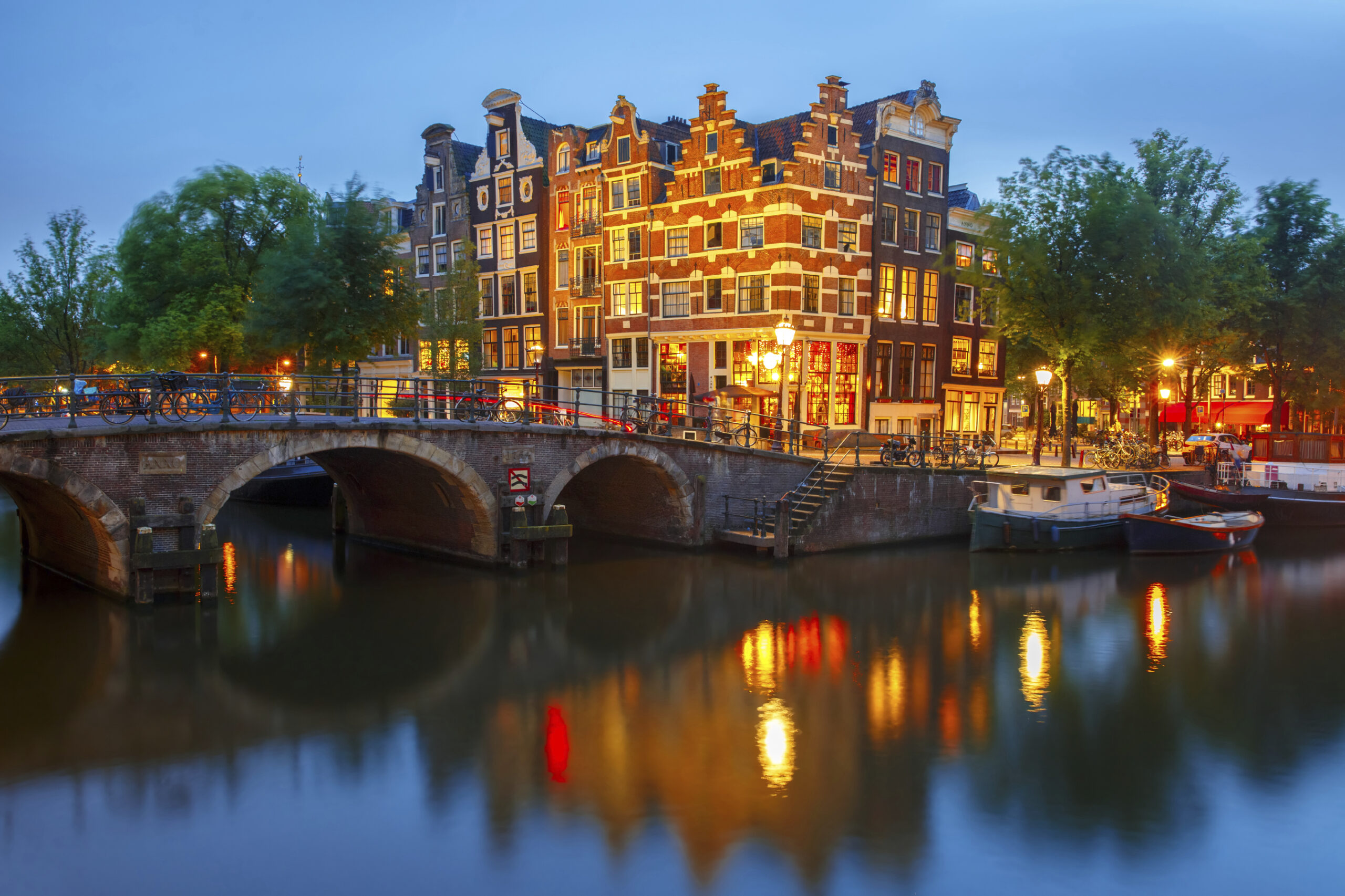
Brouwersgracht/ Prinsengracht – The Papeneiland
The cultural revolution of the 1960s and 1970s made Amsterdam the magical center of Europe. In Amsterdam in the 1960s a youth group known as Provo. They challenged the authorities. Unlike in Paris and Berlin, where protests were violent, here activists used fun games. For a while Amsterdam became the world’s hippie capital.
The use of soft drugs was tolerated and this policy made the city a popular destination for hippies. Amsterdam entered the 1980s on an explosive note. During the coronation of Queen Beatrix in 1980, protesters started a riot and the military had to be called in. During the 80s there was also an influx of immigrants from Morocco and Turkey.
As a result, many people moved to cities near Amsterdam like Almere and Purmerend. At the end of the 20th century Amsterdam entered a new era of prosperity; neighborhoods like the Pijp and the Jordaan, which had previously been working-class areas, became highly sought-after places of residence for the newly wealthy yuppies and students. Amsterdam, which used to be a poor city in the Netherlands, turned into an economically rich city thanks to the new trend towards a service-economy instead of an industrial economy.
21st century
As the new century dawned, social problems such as ethic and sexual discrimination increased and religious disagreements – as sometimes occur in multi-ethic, multi-faith communities – began to emerge. In 2001 gay marriage was legalized though there was strong opposition from fundamentalist religious groups. In 2004 the murder of media celebrity Theo van Gogh, killed by a young Moroccan radical, put Amsterdam’s famed multiculturalism and tolerance to the test.
At the same time, national and city governments, responding to increasing popular pressure to combat organized crime and drug tourism, were acting to curtail the Red Light District and the coffee shops. Things have calmed in recent years and the city continues to attract tourists with its beauty, architecture, canals and, above all, progressive attitude.
Modern Amsterdam has a cosmopolitan feel, with a unique mix of Arabs, Africans, homosexuals, hippies, intellectuals, poor workers and wealthy businesspeople, not to mention the inhabitants of the Red Light District. The city is also known worldwide for its tolerance and liberalism. It’s a wonderful place to be for anyone.
Amsterdam has become one of the premier tourist cities in the world, trading on its historic center and its wealth of artistic collections. Today it operates much as it did during the Golden Age with banking, trade and modern “pelgrims” (tourists) ensuring it remains a wealthy city.


